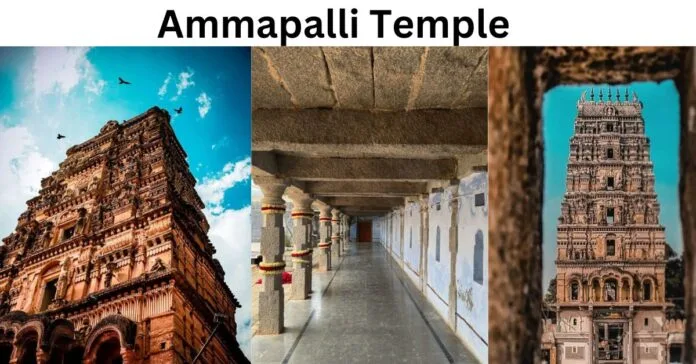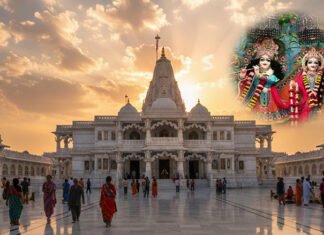Introduction To Ammapalli Temple
The Ammapalli Temple Sri Seetha Rama Chandra Swamy Temple is a historical marvel that exemplifies India’s rich spiritual and cultural legacy. famous for its devotion to Lord Rama and his spouse, Goddess Sita. Situated near Shamshabad is the Ammapalli Sita Rama Chandra Swamy Temple. Deeply spiritual and steeped in history, this temple’s ancient roots and architectural elegance draw historical lovers and devotees.
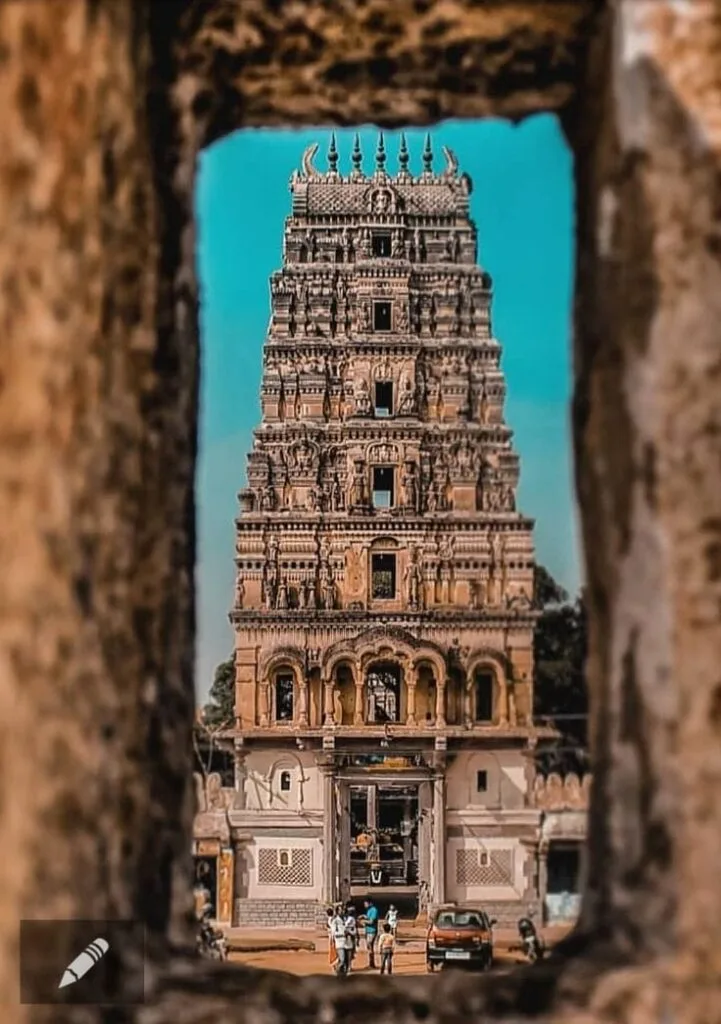
Also Read: Ultimate Guide To ISKCON Temple in Hyderabad, Address, History
Ammapalli Temple Historical Significance

The Chalukya dynasty built the temple in the twelfth century. The style and carvings of the temple reflect the revival of Hindu culture and architecture during this time. The temple is a good example of traditional South Indian architecture. Many smaller shrines encircle the huge center courtyard, providing a calm and roomy setting for prayer. The complex artwork and carvings inside the temple portray events from the Ramayana, the Hindu epic that tells the story of Lord Rama’s exploits. These intricate artworks add to the temple’s historical and cultural value.
Absence of Hanuman’s Idol

One of the most intriguing aspects of this temple is the absence of an idol of Hanuman in the main sanctum. This temple’s architecture pays tribute to its historic origins and the period of history that preceded the notable. worship of Hanuman in such circumstances, in contrast to most Rama temples, which prominently display Hanuman as a symbol of devotion.
Architectural Features
Garbhagriha
The deepest room is home to the main deity, Sri Sith Ramachandra Swami. Usually surrounded by a barrier for security, this area serves as the center of worship. usually consists of a humble yet revered structure with the idol of the deity placed atop an elevated platform. Exquisite sculptures and symbolic trinkets are commonly utilized to adorn the shrine.
Gopurams (Gateway Towers)
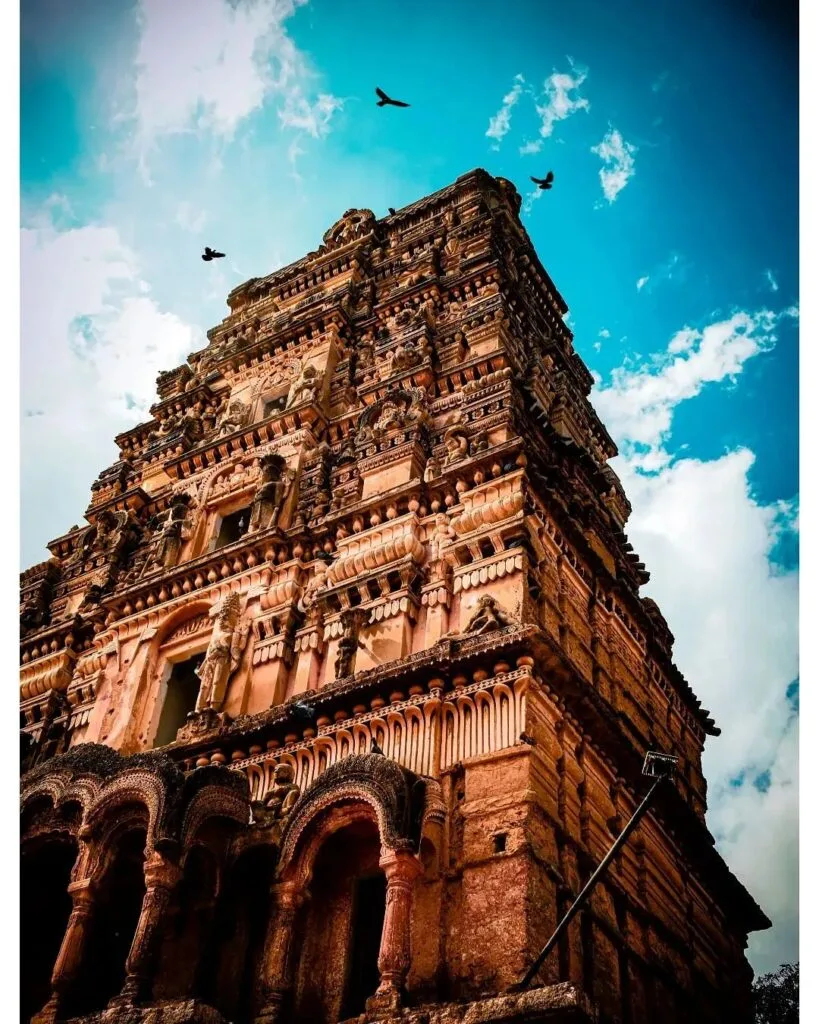
Elaborate sculptures and carvings depicting mythological scenes, deities, and celestial figures decorate the monumental entrance towers at the Ammapalli temple entry points, which are designed to welcome devotees and signify the transition from the worldly to the sacred. They create a spectacular entrance, serving a dual symbolic and artistic purpose. People frequently use beautiful sculptures and symbolic objects to decorate the shrine.
Mandapams (Pillared Halls)
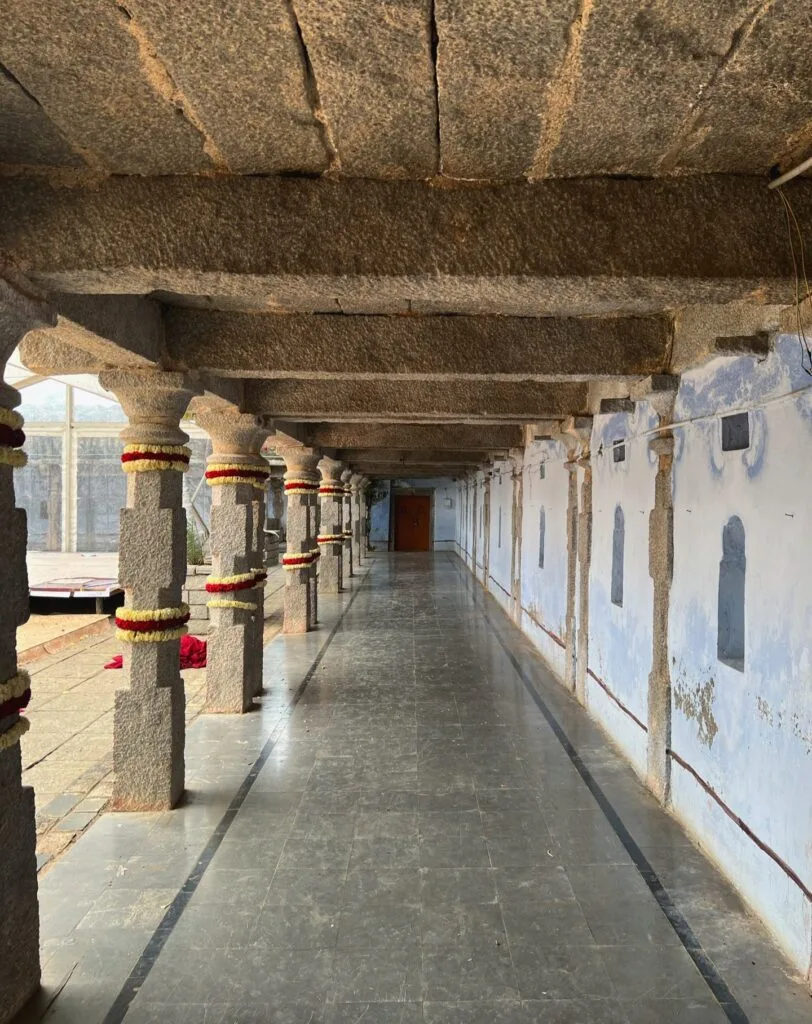
People use the spacious halls within the temple complex for various religious ceremonies, congregational activities, and community gatherings. Characterized by numerous pillars with detailed carvings, these halls often feature intricate ceiling artwork and provide a space for worshippers to gather and participate in rituals.
Step Well (Baoli)

The purpose of a traditional water reservoir next to the temple is to give the local population and the temple a steady supply of water. It consists of a series of steps leading down to the water level, often featuring ornate carvings and architectural details. The well’s dual purpose of utility and decoration reflects the temple’s past inventiveness in water management.
Temple Walls and Surroundings
Murals, bas-reliefs, and carvings that narrate stories from Hindu mythology and illustrate various deities often decorate the walls of the temple and its surrounding courtyards. Richly adorned with vibrant colors and intricate patterns, these artistic elements enhance the spiritual atmosphere and educate visitors about religious tales and traditions.
Also Read: The Ultimate Guide to Sri Peddamma Temple, Hyderabad
Ammapalli Temple in Movies
The Ammapalli Rama temple appears in over a thousand Telugu movies and television series. The wildly popular Murari film has made this temple known as the “Murari Movie Temple” and the “Cinema Gudi.” March 19, 2024. The Ammapalli Sri Kodandarama Temple is a favorite among filmmakers because of its timeless beauty, meditative atmosphere, and combination of divine calm and architecture. This historic temple has served as the setting for several iconic movie scenes over the years.
How to Reach the Temple
By Bus: There are TSRTC bus lines that go to Shamshabad and have connections to the temple.
By Train: Hyderabad Deccan (Nampally) or Secunderabad Junction are the closest train stations. You can take busses or cabs to the temple from there.
By Metro: The nearest metro station is Raidurg on the Blue Line, followed by a taxi or bus ride to the temple.
Timings:
| open | Morning | Evening |
| Daily | 6:00 a.m.–12:00 p.m. | 6:00 am -12:00 pm |
Conclusion
The Sri Seetha Rama Chandra Swamy Temple in Ammapalli, built in the 12th century by the Chalukya dynasty, is a significant historical and spiritual site. Known for its intricate carvings, grand gopurams, and serene surroundings, it reflects South Indian architectural elegance. Unique for its lack of Hanuman’s idol, the temple highlights its ancient origins. Popular in films, it continues to attract devotees and visitors, symbolizing India’s rich cultural and spiritual heritage.
FAQs
A: The temple was constructed in the 12th century by the Chalukya dynasty
A: The temple is renowned for its intricate carvings and traditional South Indian architectural style
A: The step well provides a historical water source and features decorative carvings.
A: The gopurams are grand entrance towers symbolizing the transition from the worldly to the sacred
A: The walls are decorated with murals and bas-reliefs depicting Hindu mythology.
Suggested articles:
The Ultimate Guide to Sri Peddamma Temple, Hyderabad: timing and Location
Ultimate Guide To ISKCON Temple in Hyderabad, Address, History
The Unique Traditions of Sri Chilkur Balaji A Pilgrim’s Guide to the Visa Temple

